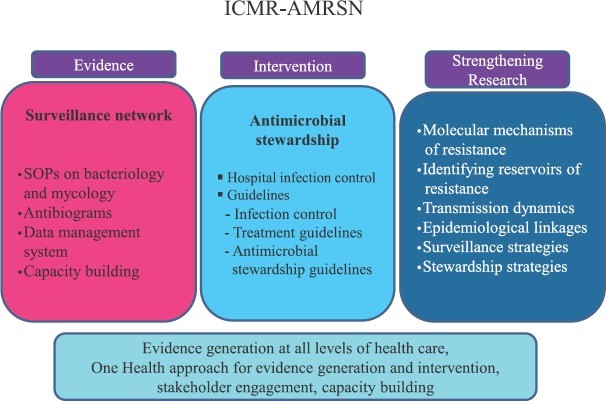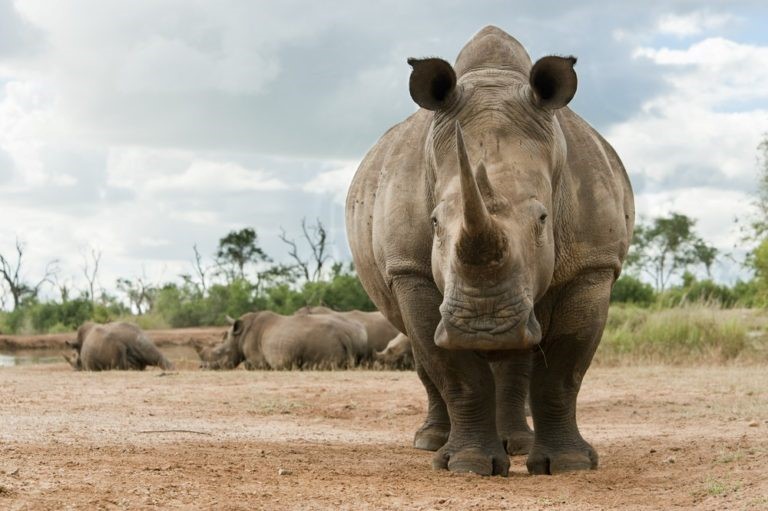Constitution Amendment Bills
The Union Cabinet has cleared the proposal to hold simultaneous elections in India, as recommended by Kovind committee with 15 amendments to the Constitution of India.
- Introducing the bill - A Constitution Amendment Bill is a bill that can be introduced in either House of Parliament to amend the Constitution of India.
- A minister or a private member in both houses can introduce the bill without the President's prior permission.
- Required Majority - A simple majority is required to adopt the motion for introducing the bill.
- A Constitution Amendment Bill must be passed by both the Lok Sabha and the Rajya Sabha by a special majority.
- A special majority is required to pass the bill in each House.
- Special majority - More than half of the total membership of the House must vote for the bill, and at least two-thirds of the members present and voting must also vote for it.
- Passing of the bill - Each House must pass the bill separately.
- If the bill affects vital issues, it must also be ratified by at least half of the State Legislatures.
- After both Houses of Parliament pass the bill, and the State Legislatures ratify it where necessary, the bill is presented to the President for assent.
- Parliamentary action - After a bill is passed, Parliament may pass it with amendments, reject it, or keep it pending.
- Number of amendments - As of September 2024, there have been 106 amendments to the Constitution of India since it was enacted in 1950.
Article 368 states that the Parliament may, in exercise of its constituent power, amend by way of addition, variation or repeal any provision of the Constitution in accordance with the procedure laid down for the purpose.
Reference
The Indian Express | Kovind committee report
Robotic mule
The Army has procured and inducted 100 robotic mules in forward areas under the fourth trance of emergency procurements (EP) recently.
- Design - A robotic mule, also known as a Multi-Utility Legged Equipment (MULE), is a dog-shaped robot that can be used for surveillance and transporting light loads across difficult terrain.
- The robotic mule can climb stairs, steep hills and other hurdles.
- Temperature - It can operate in extreme temperatures, ranging from -40 to +55 degrees Celsius.
- Payload - It carry a payload of 15kg.

- Endurance - The robotic mule is a high-endurance, agile and durable all-weather ground robot.
- Durability - It can able to walk up to 3 years.
- Water proof - It can go inside water and cross rivers.
- Sensing - It has the ability to recognise objects around as there are electro-optics, infrared.
- Control - The MULE is controlled by an easy-to-use remote control. It can also be operated using Wi-Fi or Long-Term Evolution (LTE).
- Pre-fed missions - The MULE can be programmed to complete missions using waypoints or recorded missions.
- Integration with small arms - The MULE can be integrated with small arms for combat purposes.
Peak pods
- DTECH 360 Innovations announced the field launch of its Peak Pods.
- Peak Pods is a high-altitude habitat (tent) designed for sub-zero temperature regions.
- Temperature - Peak Pods operated using cutting-edge technology to achieve 15° C inside the shelter in sub-zero temperatures, even when the outside temperature is touching minus 40° C.
- Fuel - No fuel or electricity needed.
- Bio-toilets - It has an inbuilt bio-toilet feature.
- The Peak Pod can be rapidly deployed as it can be dismantled into 30kg blocks.
- It is ideal for high-altitude military bases, research stations, adventure tourism destinations, fast-track hospitals, disaster relief camps among others.

Reference
The Hindu | Army inducts robotic mules, high-altitude tents
Antimicrobial Resistance Surveillance Network (AMRSN)
The report published by the ICMR’s Antimicrobial Resistance Surveillance Network (AMRSN) shows that UTIs, blood stream infections, typhoid and pneumonia show resistance to commonly used antibiotics.
- The Indian Council of Medical Research (ICMR) initiated the Antimicrobial Resistance Surveillance & Research Network (AMRSN) in 2013 to collate nationally representative data.
- Aim - Understanding of the molecular mechanisms of bacterial resistance, how bacteria evolve, acquire and transmit antibiotic resistance is vital for forecasting and addressing the problem.
- The current ICMR effort also includes understanding the molecular mechanisms of resistance as part of the objectives of the Network.
- Goals
- Establish network of hospitals to monitor trends in the antimicrobial susceptibility profile of clinically important bacteria and fungi limited to human health.
- Include comprehensive molecular studies for identifying the clonality of drug-resistant pathogens and their transmission dynamics.
- Disseminate information on AMR in pathogenic organisms to stakeholders to promote interventions that reduce AMR; and
- Create data management system for data collection and analysis.

- Recent findings - The report highlights that antibiotic overuse and misuse are the biggest drivers of AMR.
- The experts brainstormed and identified the following 6 pathogens as focus areas for ICMR-AMRSN
- Enterobacteriaceae causing sepsis,
- Gram-negative non-fermenters,
- Enteric fever pathogens,
- Diarrhoeagenic bacterial organisms,
- Gram-positives - staphylococci and Enterococci, and
- Fungal pathogens (excluded in the WHO priority pathogens)-yeasts (Candida and Cryptococcus spp.) and mycelial fungi (Aspergillus spp. and Zygomycetes spp.).
- Data collected from the network is used to track resistance trends and to better understand mechanisms of resistance in the key priority pathogens using genomics and whole genome sequencing (WGS).
- Diseases affected by AMR- Urinary tract infections (UTIs), bloodstream infections, pneumonia, and typhoid are showing resistance to commonly used antibiotics.
Reference
The Hindu | Antimicrobial Resistance Surveillance Network (AMRSN)
White Rhinos
The number of white rhinos increased slightly but so have the killings, mostly in South Africa, as poaching fed by huge demand for rhino horns.
- White rhinos are the second-largest land mammal after elephants.
- Nomenclature - Their name comes from the Afrikaan’s, a West Germanic language, word “weit” which means wide and refers to the animal’s mouth.
- White rhinos aren’t white but grey in colour.
- It is also known as the square-lipped rhinoceros, white rhinos have a square upper lip with almost no hair.
- Subspecies
- The northern white rhinoceros (Ceratotherium simum cottoni) and
- The southern white rhinoceros (Ceratotherium simum simum).
- Scientific Name - Ceratotherium simum
- Height - 5-6 feet, Male white rhinos are noticeably larger than females.
- Weight - 3,080-7,920 pounds.
- Habitats - Long and short grass savanna areas in grasslands.
- Distribution - White rhinos are native to Africa.
- Diet - White rhinos feed on grasses and their broad upper lip is adjusted to this type of food, Mega herbivores.
- Behavior - White rhinos are semi-social and territorial. Females and subadults generally are social, but bulls are often solitary.
- Conservation status
- IUCN - near threatened.
- CITES - Appendix II.
- Threats – poaching

Reference
The Hindu | White rhinos
Integrated Development of Wildlife Habitats scheme
Cabinet gives nod to Rs. 2,602 crore Wildlife Habitats Development scheme recently.
- The Integrated Development of Wildlife Habitats (IDWH) is a centrally sponsored scheme to develop wildlife habitats in India.
- Ministry - Ministry of Environment.
- Components of the scheme
- Support to Protected Areas (National Parks, Wildlife Sanctuaries, Conservation Reserves and Community Reserves)
- Protection of Wildlife Outside Protected Areas
- Recovery program for saving critically endangered species and habitats
- The IDWH scheme has helped improve the habitats of critically endangered species like the Asiatic lion, snow leopard, and great Indian bustard.
- The scheme also helps reduce human-wildlife conflict, generate employment opportunities, and improve the livelihoods of people living near protected areas.
- Sub-schemes includes Project Tiger, Project Elephant, Project Dolphin, and Project Lion.
- Project Tiger currently uses technology such as the M-STrIPES (Monitoring System for Tigers, Intensive Protection and Ecological Status) mobile application for day-to-day management practices.
- The Project Dolphin under the Development of Wildlife Habitat component is proposed to be supported by provisioning equipment such as Remotely Operated Vehicles (ROVs) and passive acoustic monitoring devices for enumeration of dolphins as well as their habitat.
- Project Lion, also under the ambit of the Development of Wildlife Habitat, will be strengthened as per activities envisaged.
- Project Elephant component is envisaged to leverage information and communication technology interventions.
Reference
Hindustan Times | Integrated Development of Wildlife Habitats scheme



